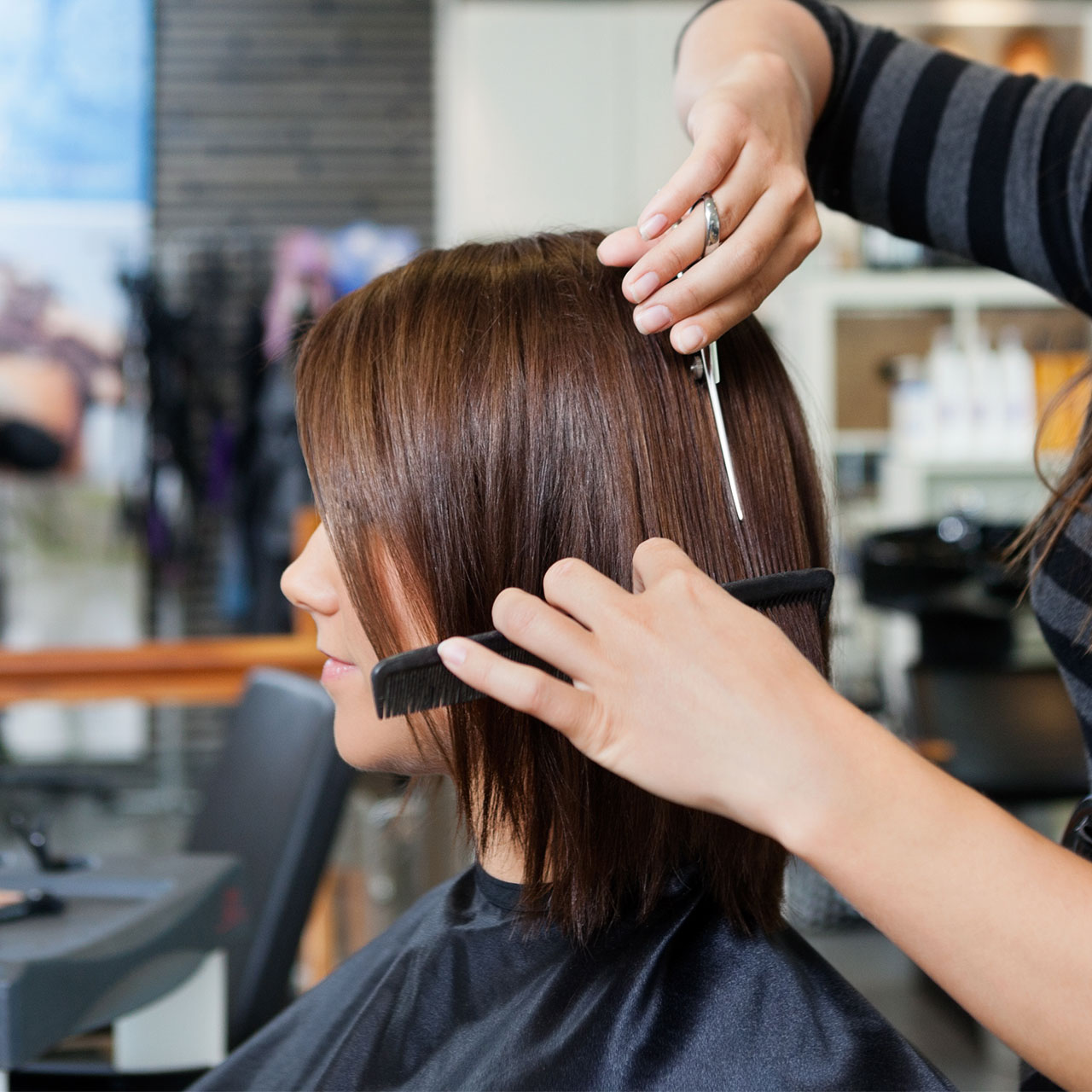
5 Unflattering Medium-Length Hairstyles To Skip For Fine & Thin-Haired Beauties
1. Choppy Front Layers
When it comes to thinning and hair loss, Hickox says that this often occurs at the hairline and crown area, firstly. This, he stresses is why it's best to avoid any hairstyles (like those with front layering) that draw attention to this area.
"As those front pieces get a little bit longer, if they start to thin, they're going to start looking very thin at the ends," he says. He adds that your hair will start to look "piecey" and even thinner overall.
2. Heavy Bottom Layers
Another layered look for fine-haired beauties to avoid, Hickox shares, is one that has intense and heavy layering at the bottom of the cut. "The concern with over-layering on the bottom of a medium length is that the farther and longer your hair gets from your neckline, the less it supports layering in the bottom of your hair or around the back." You might have a shorter shape that's much closer to your neckline, say like a bob, he notes, and it could "support a lot of layering down there, meaning it would look thick and dense."
Then, as that same amount layering starts to grow out, and it "starts getting a little bit longer, towards the collarbone-length," he adds that you'll find that those ends start to look a lot thinner and thinner. "The concern again is that in the process with thin and fine hair, we're trying to find a style that makes your hair look as dense as possible," Hickox advises. "Any time there are ends that look very thin, it makes your overall hairstyle look less thick."
3. One-Length Lobs
While layers can make your hair look thinner if done incorrectly, Hickox says that they are still ideal for creating volume if cut to flatter your hair type. He recommends skipping a one-length lob that ends "around the collarbone" area.
The main concern with this style when it comes to thinner hair, is that "with this being one-length, even though it's a bob and not super long, it still is on the longer side for thin, fine hair, and it has a tendency to get very heavy," he continues. The sleek overall look of a lob may "lay too flat" for someone who wants "volume and density," he notes.
4. Overly Angled Bobs
This type of bob is "a little bit more dramatic" than one that just "follows your jawline," Hickox says, and there is often "a bit of accentuated length in the front." The "big problem" with this 'do for anyone with thinner hair, he adds, is that your hair might naturally be thinner at the front, and this bob is "one hundred percent reliant on that length being very strong and dense." If your front length is "not strong and dense," the probability of you being able to "really create the look of this, what really draws your attention to it when you see it in a magazine, may be very thin."
Ultimately, if the front of your hair isn't naturally dense enough, it won't create the angled line that you might see thicker-haired celebs rocking when it comes to this bob. Since the angle "starts at the back of your ear and goes forward, if your hair isn't thick enough to make that line look dense, then it'll actually look like there's less of an angle," he goes on.
5. Wolf Cuts
The wolf cut is a trendy new name for a shag, Hickox says, and this style requires "a lot of layering at the bottom." There is so much layering going on that this look is actually "supposed to look thin at the bottom," he continues, as the "layers on top are very short and there are lots of layers from then on and down throughout the entire head of hair." In that case, because it's meant to look a little bit thin, it will still look best on thicker-haired people.
To really rock this, he says that shorter pieces at the top have to look more dense and voluminous. "Here's where you might go wrong, depending on how long you leave this from the neckline, there is a fine line between thin and shattered in that shag look," he stresses. You want to avoid your hair looking "scraggly and thin," without the strength to support that amount of layers.
"What you'll end up finding is that to get that really strong, shattered look, you actually need to bring the length up closer to the neckline," Hickox continues. "That might not be a problem, but the shorter you take it to the neckline, it may end up like less of the overall wolf cut that you were wanting." He says that "you might want this specific style and length coming down to your neck and realize that with your hair texture, even though it's supposed to look piecey, yours may look a little too piecey."
Pro Tips For Choosing A More Flattering Haircut
While Hickox suggests avoiding the aforementioned specific haircuts, he says it's best to "take into consideration how you can modify them to create a look that works for you and your hair texture. If you decide that you want to move towards one of these shapes, he says you should take pictures and celebrity examples and take all of them to your stylist.
This should include things that you like as well as things that you don't, He also recommends telling your stylist that you have a "thinner and finer texture of hair" as you work together to find a cut that won't emphasize that. He says that you can say what you like about the styles but then ask what will work for your individual texture.
Good to know!


